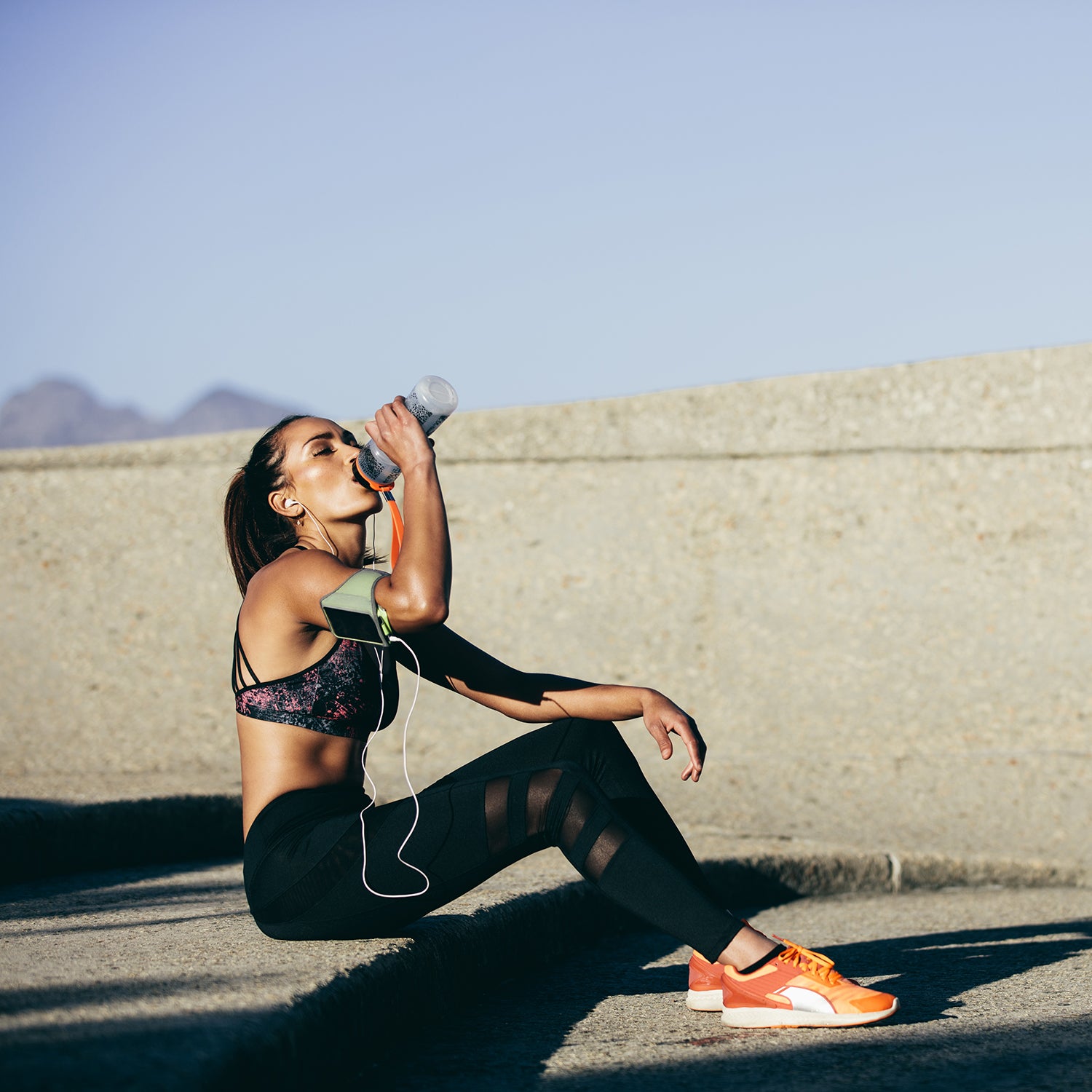Cryotherapy, floating chambers, NormaTec boots, infrared saunas, even Tom BradyÔÇôbranded pajamasÔÇöscience writer╠řChristie Aschwanden╠řtried it all while╠řresearching╠řher new book╠ř╠ř($28, W.W. Norton). (She did, however, skip vinotherapy,╠řthe red-wine baths that .)╠ř
But in a book thatÔÇÖs littered with insights into trendy recovery methods, youÔÇÖll find few endorsements. Instead, Aschwanden╠řadvocates for common sense over flash, arguing╠řthat, whether itÔÇÖs a question of╠řgetting more sleep or drinking when weÔÇÖre thirsty,╠řour own bodies may╠řbe the best recovery tools we have. ÔÇťThe fact that a whole industry has popped up to help healthy╠řpeople find ways to feel anxious about their bodies seems like a statement about the weird times we live in,ÔÇŁ she writes. ÔÇťLearn to read your own body and pay attention to what itÔÇÖs telling you.ÔÇŁ Below, weÔÇÖve rounded up five key╠řlessons at the heart of the book.
Stay Thirsty
What to drink during exercise,╠řand how much, is an ongoing╠řdebate among athletes and health professionals.╠řWhile daily water-intake recommendations vary (the National Institute of Health ╠řthat men consume three liters per day╠řand women 2.2 liters), athletes are invariably told to drink at every opportunity. This hydration preoccupationÔÇöoften╠řprompted╠řby science of limited rigor and fueled by marketing from sports-drink╠řcompaniesÔÇöhas╠řlead to╠řpeople drinking even when theyÔÇÖre not thirsty, especially when working out. And╠řaccording to Aschwanden, that could be a big problem. ÔÇťThe body is highly adapted to cope with losing multiple liters of fluid,ÔÇŁ she writes.
In fact, the evidence cited in her book shows that drinking too much water╠řposes a much greater risk than drinking too little. Overhydration can╠řlead to blood-sodium levels becoming diluted to dangerous and even fatally low concentrations (a condition known as hyponatremia). This became a recurring problem, for example, at the Comrades MarathonÔÇöa famous 90-kilometer race╠řin South AfricaÔÇöafter it added water stations for the first time in 1981. ÔÇťThereÔÇÖs never been a case of a runner dying of dehydration on a marathon course,ÔÇŁ recounts Aschwanden. ÔÇťBut since 1993, at least five marathoners have died from hyponatremia that developed during a race.ÔÇŁ Drinking when thirsty, she advises, is the much better approach than wrought water consumption.
Skip the Ice
Icing postworkout╠řbecame a mantra of sports science after physician Gabe Mirkin coined the popular term RICE (rest, ice, compression, elevation) in 1978, and the recovery tool continues today in marathon medical tents and professional locker rooms.╠řIce is meant to slow blood flow, which reduces inflammation and pain. But, it turns out, that also can be counterproductive, as it inhibits the rebuilding of muscle╠řand the restoration process. ÔÇťInstead of promoting healing and recovery,ÔÇŁ Aschwanden writes,╠řÔÇťicing might actually impair it.ÔÇŁ And thatÔÇÖs led to a growing backlash against icing, which╠ř. Instead of rushing to the cold stuff, Aschwanden advises athletes to wait it out and leave time for the body to heal.
Know Your Limits
In her former life, Aschwanden was an elite nordic skier, racing with Team Rossignol╠řin Europe and North America.╠řEvery season, she remembers, followed╠řroughly the same pattern: After intense preparation, she would excel in her first few races. Then, as the months went on, sheÔÇÖd invariably come down with an injury, cold, or another ailment that would cut her performance short. Looking back, Aschwanden attributes her crashes in large part to fatigue from overtraining. ÔÇťI needed less training than most athletes to reach and maintain peak conditioning,ÔÇŁ Aschwanden writes. ÔÇťBut I did not appreciate that I also needed more rest and recovery.ÔÇŁ Overtraining╠řsyndrome is an increasingly recognized problem╠řthat has led to the decline of many endurance athletesÔÇÖ╠řcareers. To avoid pushing the body beyond its limits, Aschwanden suggests that athletes keep an eye out for personal signs of fatigue when training. Hers is a sore throat, but other indicators could include weight fluctuations, mood changes, or coming down with a bug.
Let Go of FOMO
Fear of missing out╠řis a common theme of AschwandenÔÇÖs book. Whether itÔÇÖs a dietary supplement or an infrared sauna, she writes that many people try a new recovery technique simply╠řbecause other people around them are doing it. While thatÔÇÖs probably not harmful, she concludes,╠řany positive effect may just╠řbe a placebo. ÔÇťMany popular modalities strike me as sort of pacifiers,ÔÇŁ she writes. ÔÇťThey wonÔÇÖt actually resolve anything, but they give you something to do while nature takes its course.ÔÇŁ╠řIf trying a new, unproven recovery method makes you feel better and more confident, great, she argues, but they almost certainly arenÔÇÖt necessary.
Make Sleep King
One exception to AschwandenÔÇÖs╠řgeneral skepticism is sleep.╠řÔÇťInsofar as there exists any magical secret for recovery, sleep is it,ÔÇŁ she says. ÔÇťThe benefits of sleep cannot be overstated. ItÔÇÖs hands down the most powerful recovery tool known to man.ÔÇŁ Beyond contributing to╠řlower testosterone levels and a suppressed immune system, a lack of sleep can also be tantamount to ÔÇťshowing up to the game drunk,ÔÇŁ she writes. The right amount of sleep╠řfor each person isÔÇölike many things in the bookÔÇösubjective. Citing sleep scientist Amy Bender, Aschwanden writes that athletes should sleep when their body tells them to (that includes afternoon naps)╠řand shouldnÔÇÖt stress out over one night of bad sleep. Instead, Bender advises people to ÔÇťthink of their sleep in terms of a weekly budget. Focus on your weekly need╠řrather than being concerned about eight hours every single night.ÔÇŁ
So╠řwhen youÔÇÖre choosing between extra sleep or that extra workout, she says youÔÇÖre likely better off sleeping inÔÇöwhich is probably the best news of all.
is available╠řFebruary╠ř5 from W.W. Norton.╠ř


